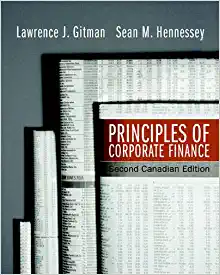Question
Question 1 (1 point) You invested $10,000 in a zero -coupon bond. The bond was worth $10,750 at the end of the year. What rate
Question 1
(1 point)
You invested $10,000 in a zero -coupon bond. The bond was worth $10,750 at the end of the year. What rate of return did you earn on this investment? Round your answer to the nearest tenth of a percent.
Question 1 options:
A)
9.3%
B)
1.1%
C)
7.5%
D)
10.8%
Question 2
(1 point)Assume that the following data on U.S. Treasury securities is current:
Years to Yield to
maturity maturity
1 4.32%
2 4.34%
3 4.34%
4 4.34%
5 4.36%
7 4.42%
10 4.59%
20 4.78%
Refer to the information above. How much will a $10,000 investment in 5 -year Treasury notes return if the investment is held to maturity? Round your answer to the nearest $10.
Question 2 options:
A)
$10,440
B)
$12,380
C)
$52,160
D)
$52,180
Question 3
(1 point)
Years to Yield to
maturity maturity
1 4.32%
2 4.34%
3 4.34%
4 4.34%
5 4.36%
7 4.42%
10 4.59%
20 4.78%
Refer to the information above. You purchase a $1,000, zero-coupon, Treasury bond that matures in five years. Assume the term structure remains constant and that you sell the bond after holding it only three years. For what price can you sell it?
Question 3 options:
A)
$1,135.71
B)
$917.66
C)
$958.41
D)
none of the above
Question 4
(1 point)
A bank quotes you an annual loan interest rate of 14%, daily compounding, on your credit card. If you charge $15,000 at the beginning of the year, how much will you have to repay $17,250 at the end of the year? True or false?
Question 4 options:
True
False
Question 5
(1 point)
You want to set aside some money today in order to present your son with a $3,000 trip upon his graduation from high school in seven years. If your opportunity cost of capital is 10% per year, how much do you need to set aside? Round your answer to the nearest dollar.
Question 5 options:
A)
$4,843
B)
$1,539
C)
$471
D)
$1,233
Question 6
(1 point)
The rate of return includes all of the following EXCEPT:
Question 6 options:
A)
Income
B)
Holding Period
C)
Capital Gains
D)
Percentage of Purchase Price
Question 7
(1 point)
For investors, the coefficient of determination shows how much variability in the returns of one asset can be associated with variability in the returns of the market. True or false?
Question 7 options:
True
False
Question 8
(1 point)
Which is the better deal:
Question 8 options:
A)
a deposit of one penny today in an account that will offer a daily return of 100% for one month (i.e., the value of the account is doubled every day for 30 days)
B)
a lump sum of $10 million to be received thirty days from today?
Question 9(1 point)
Which of the following is not a necessary condition of a perfect market?
Question 9 options:
A)
no risk
B)
no taxes
C)
no transaction costs
D)
no information differences among investors
Question 10
(1 point)
The stock's characteristic line shows the return investors can expect the stock to produce, given that a particular rate of return appears for the market. True or false?
Question 10 options:
True
False
Step by Step Solution
There are 3 Steps involved in it
Step: 1

Get Instant Access to Expert-Tailored Solutions
See step-by-step solutions with expert insights and AI powered tools for academic success
Step: 2

Step: 3

Ace Your Homework with AI
Get the answers you need in no time with our AI-driven, step-by-step assistance
Get Started


